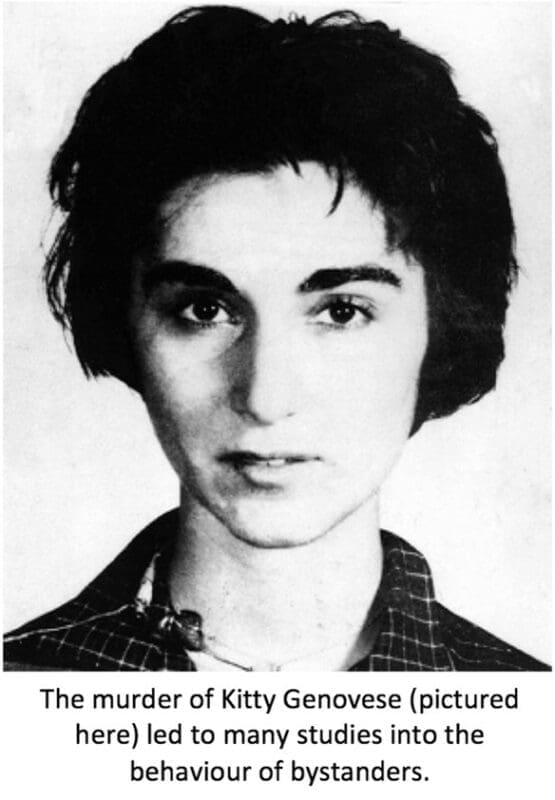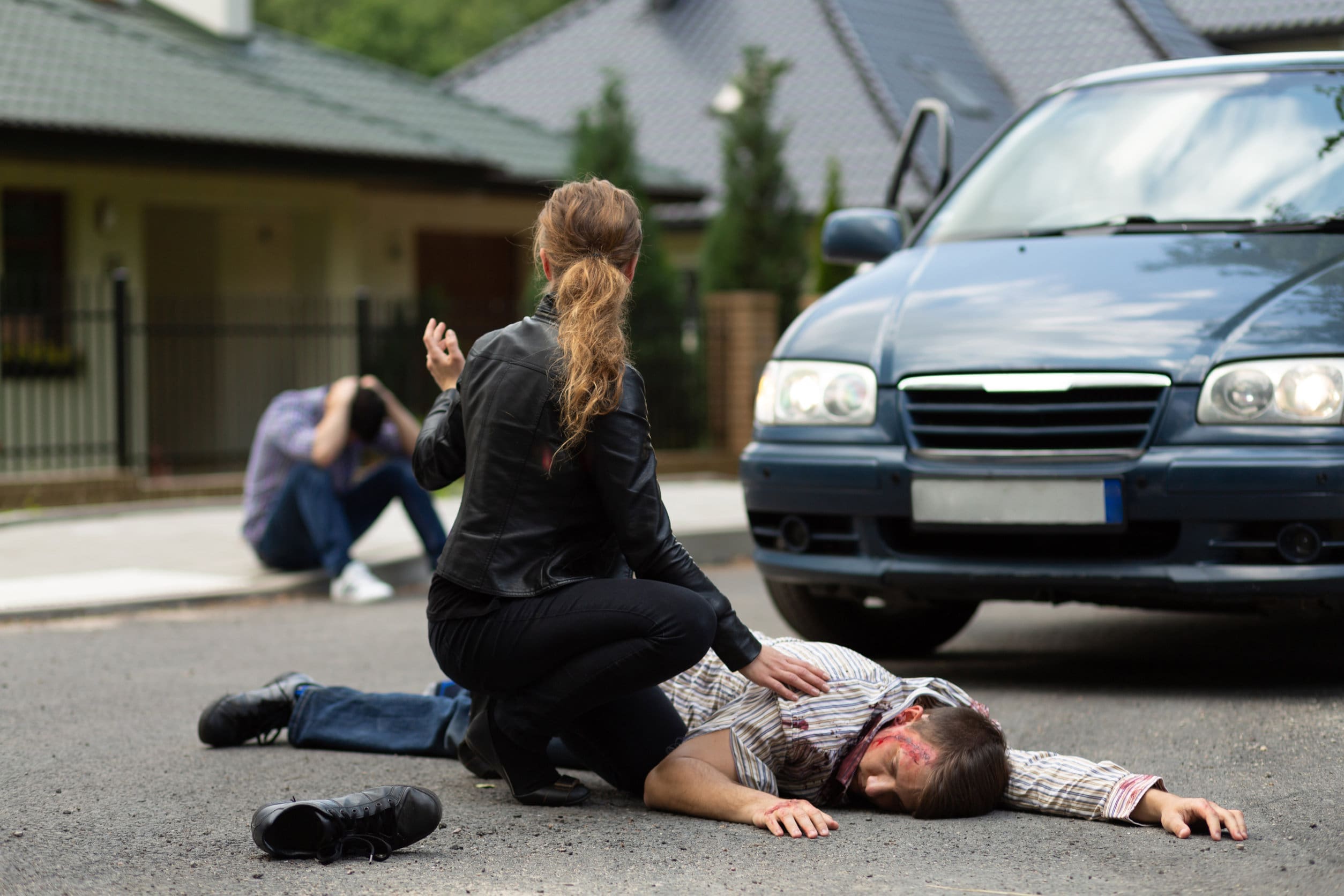In this post
In response to the murder of Kitty Genovese, many psychologists became interested in the behaviour of bystanders, when it became clear that over 30 people had heard Kitty being murdered but none of them had intervened and tried to help her, even though she was attacked twice. The term ‘bystander apathy’ was coined to describe people who stood by and did not react in a situation that could be classed as an emergency.

Two important concepts in this area of research were identified:
- Diffusion of responsibility: this is the idea that people are less likely to offer to help someone if there are others present, because they perceive responsibility as being shared between all present, and therefore see themselves as being less personally responsible
- Pluralistic ignorance: this is the tendency for people in a group to mislead each other about an emergency situation. For example, a person might perceive an emergency as a non-emergency because others are remaining calm and not taking action and therefore do not react themselves because of this
Piliavin et al. recognised that most research in this area had taken place in laboratories and therefore the results lacked ecological validity. They wanted to conduct research in a real-life situation where they could observe behaviour in a day-to-day setting.
Aim
The researchers wanted to investigate factors affecting helping behaviour, including:
- The type of victim (drunk or ill)
- The race of the victim (black or white)
- The speed of helping
- The frequency of helping
- The race of the helper
They also wanted to investigate the impact of the presence of a model (someone who offers help first), as well as the relationship between the size of the group and frequency of helping.
Method
- This was a field experiment using non-participant observation
- Participants were approximately 4,450 people travelling on a particular stretch of the New York underground system between 11 a.m. and 3 p.m. on weekdays during the period of April 15th to June 26th, 1968
- The average racial composition of the passengers on the train, which travelled through Harlem to the Bronx, was 45% black and 55% white
- The average number of people in the train carriage was 43, and the average number of people in the critical area where the incident was staged was 8.5
- On each trial, a team of four students (two males and two females) boarded the train using different doors
- The ‘victim’ always stood next to a pole in the centre of the critical area. As the train passed the first station (approximately 70 seconds after depart-ing), the victim staggered forward and collapsed
- Until receiving help, he remained motionless on the floor, looking at the ceiling. If he received no help by the time the train slowed to a stop, the model helped him to his feet
- The observers noted the total number of passengers who came to the victim’s assistance, plus their race, sex and location
- The observers also noted the race, sex and location of every pas¬senger, seated or standing, in the critical and adjacent areas
- A second observer noted how long it took for help to arrive
Result
- Helping behaviour was much higher than in laboratory studies
- The ‘victim’ using a cane received help 62 out of 65 times
- The ‘victim’ who appeared drunk was helped 19 out of 38 times
- Out of 81 trials, more than one person offered help 60% of the time
- The race of the victims made no significant difference to helping behaviour, but there was a slight tendency for same-race helping in the drunken condition
- 90% of helpers were male
- 64% of helpers were white
- There did not appear to be any diffusion of responsibility
Conclusion
Piliavin et al. developed a model to explain their results, which they called the ‘Arousal: Cost – Reward Model’.
They argue that firstly, observation of an emergency situation creates an emotional arousal in bystanders. This arousal may be perceived as fear, disgust or sympathy, depending on aspects of the situation.
This state of arousal can be increased by a number of factors including:
- Empathy with the victim (i.e. whether you can perceive yourself in the victim’s situation)
- Being close to the emergency
- The length of time the emergency continues for
This state of arousal can be reduced by a number of factors including:
- Helping
- Seeking help from another source
- Leaving the scene
- Deciding the person doesn’t need or deserve help
Therefore, according to this model, people are motivated to help people not by feelings of altruism (acting only in the interest of others) but as a way of reducing unpleasant feelings.
Strengths of the study
- It has a high level of ecological validity, as the research was conducted in a real-life setting
- The sample size was large and therefore the results can be more confidently generalised to a larger population
Weaknesses of the study
- There are some issues with the ethics of the study as participants did not know they were being involved in research and may have been distressed by seeing ‘victims’ needing help, even though the situation was not real
- Participants were not debriefed after the research so it is unknown if any were psychologically harmed by what they saw
- Extraneous variables could not be fully controlled, as this was a field experiment
- Field experiments are also more difficult to replicate so the results cannot be said to be fully reliable



